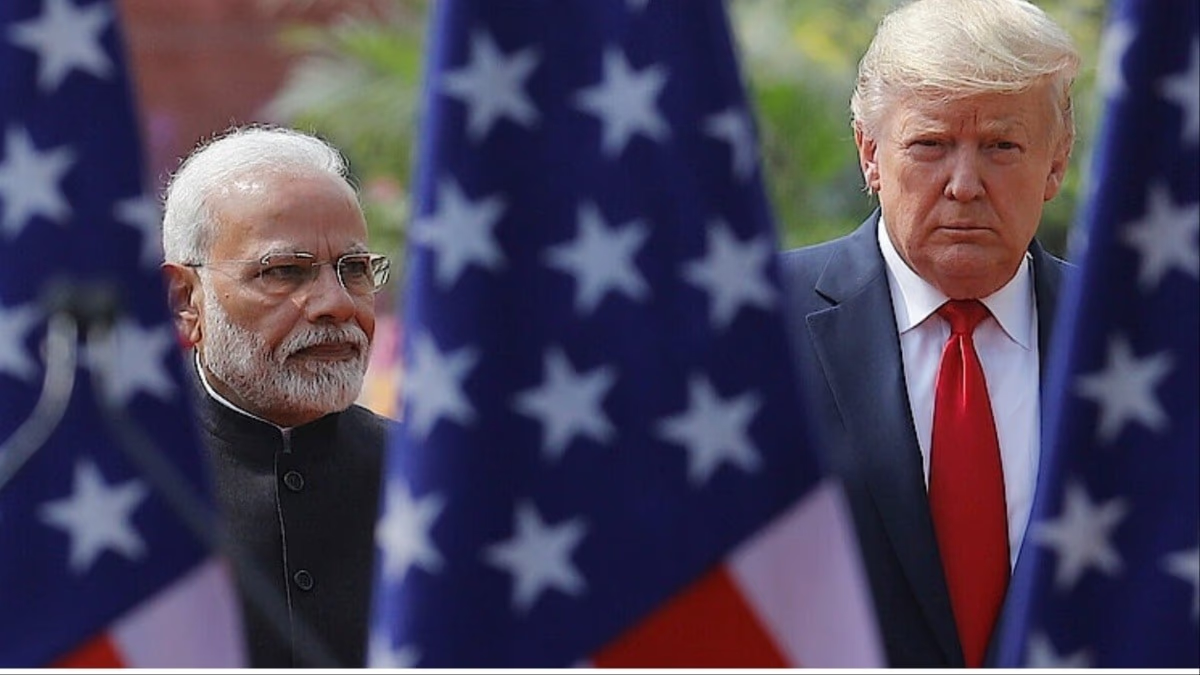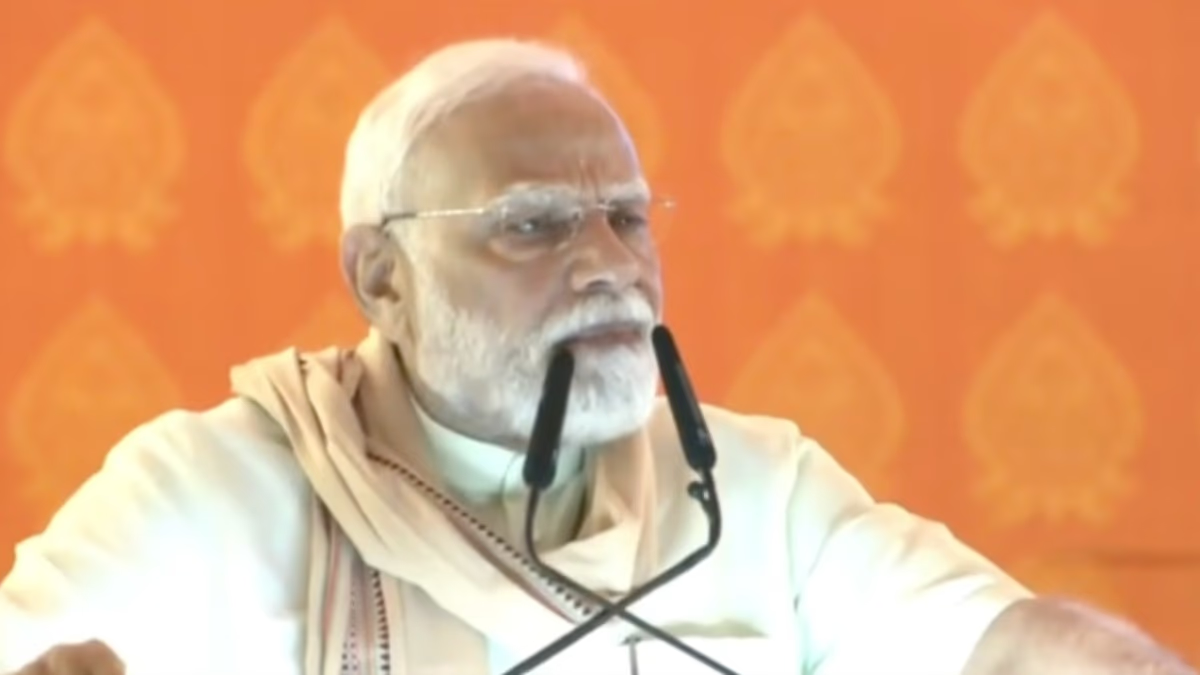The swagger of U.S. President Donald Trump has faded. Indian Prime Minister Narendra Modi's quiet resolve has prevailed. Despite Trump's bombast, the leader of the world's most powerful nation is eager to finalize a trade deal with India. Diplomacy, of course, serves a nation's interests, and America's eagerness reflects a vulnerability it hopes to address through this partnership.
There are numerous reasons why a figure like Donald Trump feels compelled to adopt a positive stance toward India and Prime Minister Narendra Modi, often describing India as a great nation and Modi as a great friend. Trump frequently expresses his desire to engage in trade deal talks on his social media posts.
Trump's change of heart is particularly noteworthy, as he once declared India's economy stagnant and imposed a hefty 50% tariff. This about-face and eagerness for a trade deal with India raise several questions. Let's explore the commercial and economic compulsions pushing America towards an agreement with India.
1 - India-U.S. Trade Relations
Trade relations between India and the U.S. have long been robust, with bilateral trade reaching $212 billion by 2024, making the U.S. India's largest trading partner. India exports steel, aluminum, pharmaceuticals, textiles, and digital services to the U.S., while importing energy, technology, and defense equipment. In August 2025, Trump imposed a 50% tariff on India, expressed displeasure over India's oil ties with Russia and close relations with China.
During tense periods, Trump was reportedly haunted by dreams of India and Modi, with not a day passing without seizing the chance to criticize India. By September, the tone softened, and America frequently expressed a desire to advance trade deal talks with India.
PM Modi responded positively, emphasizing the strong friendship between India and the U.S. and the mutual benefits of trade negotiations. America's changing stance is driven by several economic and commercial pressures, explored in the points below.
2 - America's Commercial and Economic Pressures
There are multiple reasons for America's eagerness for a trade deal with India. India recorded a GDP growth rate of 7.8% in 2025, exceeding global forecasts and positioning itself to become the world's third-largest economy. This growth cements India's role in the global supply chain, especially in semiconductors, textiles, and digital services. Overlooking a large, fast-growing market like India under Trump's America First policy could prove detrimental to U.S. businesses.
India's 1.4 billion population and expanding middle class offer an appealing market for U.S. products and services. Companies like Apple, Tesla, and Amazon are ramping up investments in India, and tariff barriers could increase costs for them. India exports over $120 billion worth of goods to the U.S., including pharmaceuticals, software, and textiles. Raising tariffs in these areas risks higher prices for American consumers, potentially driving inflation.
3 - India's Role in Global Supply Chains
Semiconductors and Technology: India has increased semiconductor production investments through initiatives like Semicon India 2025. U.S. firms like Micron and Intel are setting up semiconductor plants in India. Heightened tensions with India could jeopardize these critical supply chain investments.
Trump's policy aims to reduce dependence on China, while India, through initiatives like Make in India and Production Linked Incentive (PLI) schemes, is emerging as an alternative manufacturing hub. Without a trade deal, the U.S. may face global supply chain losses as India is expanding trade with other nations (e.g., Japan, EU).
India has initiated discussions with over 40 countries to increase textile exports, part of its strategy to seek alternative markets in response to U.S. tariffs. This could hurt American textile importers reliant on India.
4 - Tariff Reactions and Economic Pressure
In response to Trump's 50% tariff, India played strategically without retaliating directly. Through GST reforms, it created challenges for American cola brands and adjusted GST across various product categories, impacting companies like Harley Davidson, a favorite for Trump. In 2019, when Trump revoked India's Generalized System of Preferences (GSP) status, India raised tariffs on U.S. almonds, apples, and chemical products. India's response risks harming American businesses, particularly in agriculture and technology.
Trump's tariff policy has already pressured American consumers. Higher tariffs on Indian imports could drive up electronics and textile prices, escalating inflation risks in the U.S.
5 - Geopolitical Mandates and Strategic Interests, Balancing Against China
India is a key member of the Quad, designed to balance China's influence in the Indo-Pacific. Trump's comments post-Modi's China visit seemed to reflect a fear of losing India to China's influence, though this is likely a pressure tactic. India's strategic independence and SCO involvement demonstrate its policy autonomy. Isolating India would be a geopolitical blunder for the U.S., as India is a crucial partner against China.
India's oil purchases and defense deals with Russia (e.g., S-400 system) concern the U.S., but India's policies are vital for global energy stability and balancing dependence on Russia. Trump likely realized penalizing India might push it closer to Russia and China, counter to U.S. interests.
6 - Trump's Domestic and Global Image
Trump's America First policy has pressured American consumers and businesses. Tensions with a major market like India could damage his domestic popularity, especially with inflation an issue. U.S. think tanks have critiqued Trump's stance on India, with domestic support waning, likely prompting his shift.
Claiming trade agreements with China and the UK, a trade deal with India could strengthen Trump's global trade strategy, enhancing his image as a successful dealmaker.
7 - India's Counter Strategy
In response to Trump's tariffs, India promoted Make in India and indigenous products. PM Modi highlighted India's growth exceeding forecasts at Semicon India 2025. This strategy highlights India's self-reliance, compelling Trump to return to negotiations. India initiated talks with over 40 countries for exporting textiles and other goods, signaling to the U.S. that India could realign its trade focus.
PM Modi's diplomatic response to Trump's sharp critiques was measured, maintaining a positive tone towards America while not directly referencing Trump in his counter-tweets.




